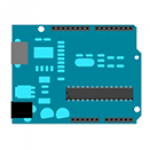Previously I developed a trip recorder using HTML, CSS, and JavaScript leveraging JavaScript’s geolocation API. I recently switched from an iPhone to Windows Phone 7 (WP7) and noticed that mobile Internet Explorer doesn’t support the geolocation API.
geolocation Archive

Mobile Truck Tracker Web Site
I’ve been meaning to publish a bit on the mobile version of the Truck Tracker application. Previous posts have been created a geo-location service that tracks ‘trucks’ (the application can be used to track any asset as

Location Based Service and Geo-Fencing
The concept of location based service is really very simple. Imagine you have a map. Pick a point of interest and draw a perimeter around the point. This perimeter is your geo-fence. In the map below the

Trip Recorder Using JavaScript’s Geolocation API and Google Maps
I recently saw Ben Nadel’s blog post that did a great job of introducing the built in browser support for geolocation. I have been meaning to write an iPhone client to collect and save GPS data as

GPS Data Logger using the Netduino
The last blog post, I described how to use the Netduino and the ladyada GPS shield to collect GPS points. Since that time the Netduino folks have made public an alpha release of firmware that supports mounting

GPS using the Netduino
I recently blogged about using the Arduino board as a GPS data logger. I have been using this to collect geo-location data for the Truck Tracker application. In this post, I will explore using the Netduino for

Truck Tracker Is Live
I have deployed the Truck Tracker application to here for now: https://bobcravens.com/trucktracker/ The application is built using the following technologies: ASP.NET MVC Google Maps API v.3 jQuery DotNetOpenAuth MySQL NHibernate Ninject The intent of the application is

Create a GPS Data Logger Using The Arduino
Recently I have been developing an application that leverages GPS tracking. The high-level concept is to track mobile assets via GPS tracking. Each asset will have a GPS unit installed that logs its location. With the availability

An ASP.NET MVC Truck Tracker Application Using Google Maps
In a previous post we built a MySQL database and a data access layer via a repository pattern implemented using Fluent LINQT to NHibernate. We also wired up this repository in our ASP.NET MVC application using Ninject.

Geolocation via Reverse IP Address Lookup
From wikipedia, “Geolocation is the identification of the real-world geographic location of an internet connected computer, mobile device, website visitor or other.” In other words, geolocation utilizes a mapping of IP address to physical location (country, region,
